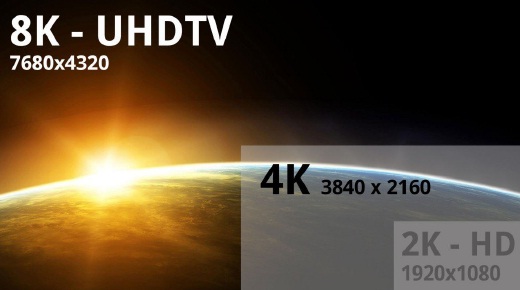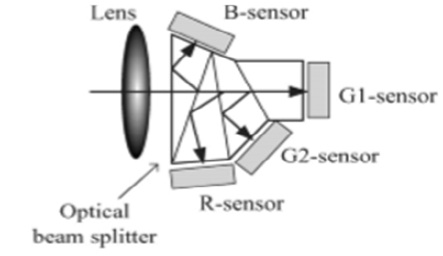8K High Resolution Camera System
Published on Nov 23, 2015
Abstract
Digital cinema is a promising application that utilizes high-speed optical networks to transfer super high definition (SHD) images. The networks are primarily used for distributing digital cinema contents in packet data form, and are also used to support new services such as the live streaming of musicals and sport games to movie theaters.
While current transfer services offer high-definition (HD) quality video, live-streaming applications will soon shift to providing cinema quality 8K content to both business and movie theaters users.
The extra- high-quality 8K format enables a realistic telepresence, and will be combined with special tools such as video editing systems to realize effective remote collaboration for business workspaces. This paper introduces successive research on SHD image transmission and its application, especially in digital cinema and associated application fields.
Four years before the digital cinema industry standardized the DCI specification, in 2001, the worlds first video JPEG decoder system was developed that could display SHD images (38402048 pixel spatial resolution) with 24-frames/s time resolution. This decoder was designed to realize IP transmission of extra-high-quality videos, while fully utilizing the full bandwidth of emerging commercial communication networks based on 1-Gb Ethernet. In 2002, the second prototype SHD image decoder was developed that exploits a highly parallel processing unit of JPEG2000 de-compressors.
The decoder receives the IP streams of compressed video contents transmitted by a video server over a 1-GbE network, and decodes them using the standard JPEG2000 decoding algorithm in real time. The decoder was combined with a special 38402048 pixel projector using a dedicated digital video interface for the decoder. This architecture allows the decoded videos to be transferred and shown in completely digital form.
This system triggered detailed discussions on the digital cinema video format for DCI. The question was whether a higher image quality than HDTV was required to replace movie films. In order to solve the question, an experiment was conducted by the Entertainment Technology Center (ETC) of the University of Southern California (USC) involving 100 digital cinema engineers; it compared the image quality of conventional films, highdefinition television (HDTV), and SHD images with 8-million-pixel resolution.
The results of this experiment yielded the consensus that the horizontal resolution of around 4000 pixels was required to replace films, and JPEG2000 was suitable for the compression of digital cinema data. Stimulated by the experiment, DCI accelerated the standardization of digital cinema, specified the movie format of 40962160 pixels, and simply called it 8K. DCI finalized version 1.0 in 2005 and version 1.2 in 2008.
Currently, further standardization activities are in progress at the Society of Motion Picture and Television Engineer (SMPTE). To explore the application range of 8K video beyond digital cinema, we developed a JPEG2000-based 8K real time streaming codec system. This codec can compress/ decom- press 8K videos: the total bit rate exceeds 12 Gb/s (4 : 2 : 2, 60 frames/s), and the resulting 5001000-Mb/s compressed streams are transferred as IP packets.
While digital cinema em- ploys the 24-frames/s movie format to replicate the cinema style, it is believed that at least 60 frames/s is needed for realistic video communication services such as teleconferencing. The following sections describe the features of the 8K imaging systems used in digital cinema and live streaming.
8K Format
8K is a new resolution standard designed for digital cinema and computer graphics. It has following advantages:
1. Higher image definition quality.
2. More detailed picture.
3. Better fast-action.
4. Larger projection surface visibility.
8K format was named because it has 4000 pixels horizontal resolution approximately. Meanwhile, standard 1080p and 720p resolutions were named because of its vertical resolution. The new standard renders more than four times higher image definition than 1080p resolutions for example.

This format can’t have the change in horizontal resolution, so changes in aspect are made through the vertical resolution. For example 40962304 is a frame size with aspect 16:9 and 40963072 - 4:3. The digital video resolutions examples:
Pixel Densities of 8K.
Full Aperture 8K 7680 * 4320 12,746,752 pixels Academy 8K 3656 x 2664 9,739,584 pixels Digital Cinema 8K 7680 x 4320 7,020,544 pixels Digital Cinema Aperture 8K 7680 x 4320 8,631,360 pixels
a) 1920×1080 pixels, referred to as 2K.
b) 4096×2160 pixels, referred to as 4K.
c)7680×4320 pixels, referred as to as 8k.
YouTube enabled 8K video support in the middle of 2010. Today, it’s the highest reso- lution format available for consumers and it has great potential! It’s quite possible that the demand for this format will increase in near future, specially by digital video data delivery services.
Structure of the Color Separation Prism
• Incident light is separated into four color and divided in to
• Two green, one red, and one blue (GGRB).
• Three-sensor imaging system (RGB) used in commercial and broadcast video cameras.
• Prism for the four-sensor system can be made as small as the conventional RGB prism.

1. Image resolution: a) 2048*1080 pixels, referred to as 2K; b) 7680*4320 pixels, referred to as 8K. The 2K format provides resolution almost equivalent to current high-definition television, while the 8K format, which has four times the resolution, provides digital images with quality as good as the conventional 35-mm film.
2. Image color reproduction and frame rate: The image quantization depth is 12 b for each XYZ color. The frame rate is the same 60 frames/s as is conventionally used for film. For the 2K format, however, a 48-frames/s mode is specified to allow for other display styles, such as the 3-D display.
3. Image compression method: JEGP2000 produces a high-quality image without the block distortion that occurs with JPEG or MPEG compression. An additional feature is that 2K resolution data can easily be extracted from 8K-resolution data. The max- imum bit rate is specified as 250 Mb/s, which corresponds to about 200300 GB for a 2-h movie.
4. Audio signal: 48 or 96 kHz, 24 b, max. 16ch, no audio compression.
5. Subtitles: The XML format is specified for subtitle data. Both image data for overlay and text data are supported.
6. Data encryption: The image and audio data are wrapped in a Material Exchange Format (MXF) and then encrypted with the Advanced Encryption Standard (AES) cryptosystem (128 b, CBC mode). The content is sent to theaters as a digital cinema package (DCP) that contains image, audio, and subtitle data.
7. Decryption key distribution: The encryption key, which is also used for decrypting the data, is encrypted by the RSA cryptosystem of the theater exhibition equipment with license period information. It is called Key Delivery Message (KDM).
8. Digital watermarking: To prevent content theft, the exhibition equipment must embed information that specifies the exhibition time and place into the projected images as a digital watermark.
References
[1] S. A. Stough and W. A. Hill, ‘‘High-performance electro-optic camera prototype,’’ Soc. Motion Picture Television Eng. J., vol. 110, pp. 140–146, Mar. 2001.
[2] N. Narita, M. Kanazawa, and F. Okano, ‘‘Optimum screen parameters for ultrahigh definition and wide-screen image systems: Study of screen aspect ratios and maximum pixels with still images,’’ J. Inst. Television Eng. Jpn., vol. 56, no. 3, pp. 437–446, 2002.
[3] T. Yamashita, K. Mitani, H. Shimamoto, M. Shirakawa, and F. Okano, ‘‘A new alignment method for an 8 k 4 k-pixel ultrahigh-definition camera with four imagers,’’ Proc. SPIEVInt. Soc. Opt. Eng., vol. 5301, pp. 76–86, 2004.